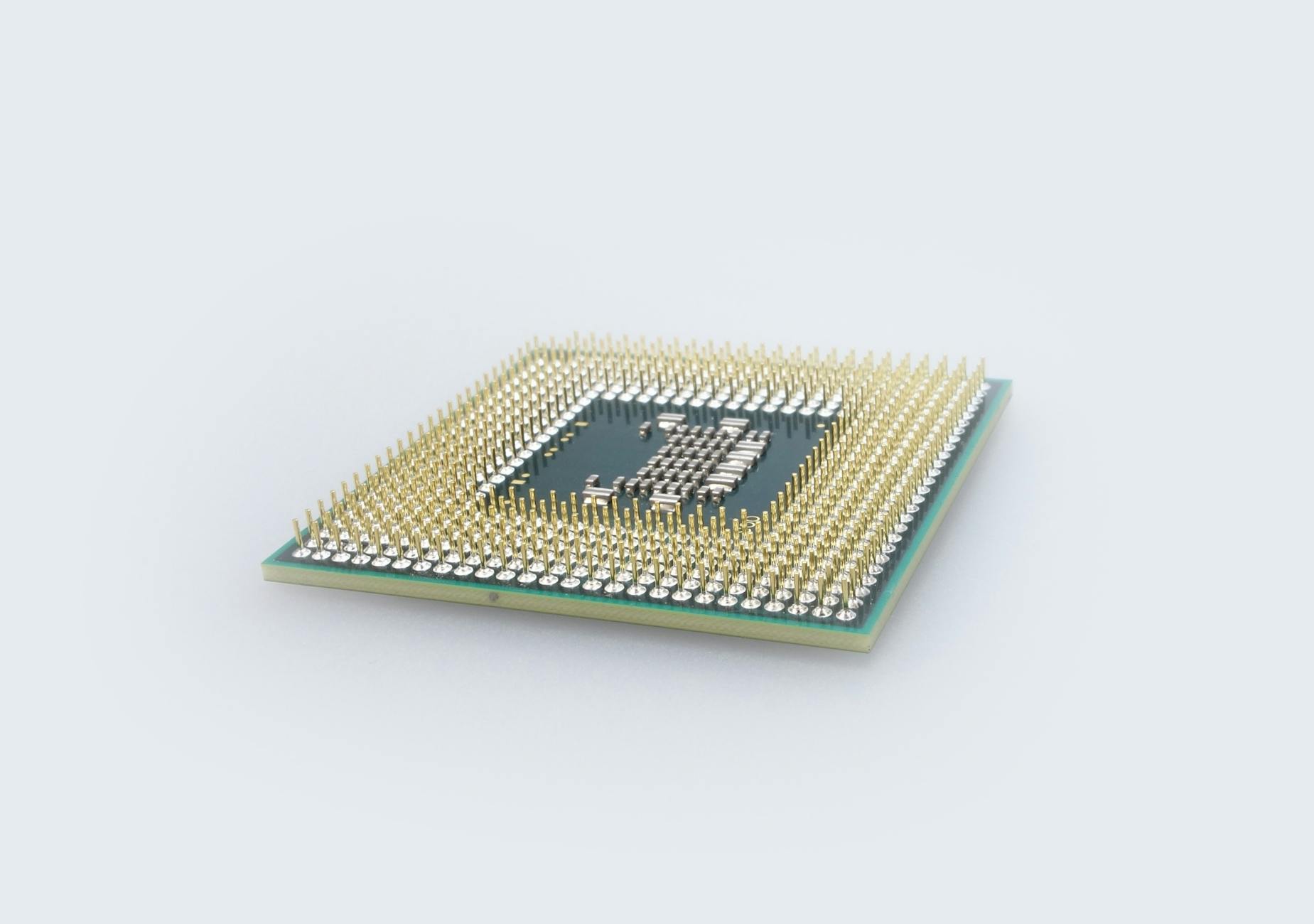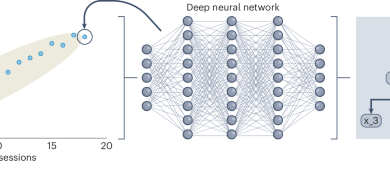An Interview with Neil Sahota, United Nations Artificial Intelligence Advisor

In an era where environmental challenges are more pressing than ever, the role of innovative technologies in promoting sustainability cannot be overstated.
Artificial intelligence (AI) stands out as a transformative tool, offering significant potential to reduce environmental footprints across various sectors.
To explore this potential, we conducted an insightful interview with Neil Sahota, a leading authority in the field.
About Neil Sahota
Neil Sahota is an IBM Master Inventor, United Nations (UN) Artificial Intelligence (AI) Advisor, Faculty at UC Irvine, and author of “Own the A.I. Revolution.”
With over 20 years of business experience, Neil collaborates with organizations to create next-generation products and solutions powered by emerging technologies. His expertise spans a diverse range of industries, including legal services, healthcare, life sciences, retail, travel and transportation, energy and utilities, automotive, telecommunications, media/communication, and government.
One of Neil’s notable achievements is his selection for IBM’s Corporate Service Corps leadership program, which pairs leaders with NGOs for community-driven economic development projects. During his assignment in Ningbo, China, Neil partnered with corporate CEOs to develop a leadership program, demonstrating his commitment to global collaboration and innovation.
Beyond his corporate endeavors, Neil is deeply involved in the entrepreneurial ecosystem. He partners with entrepreneurs to define their products, establish target markets, and structure their companies. He is a member of several investor groups, such as Tech Coast Angels, advises venture capital funds like Miramar, and consults on AI program development for Spirits Capital Advisory Board. Neil also supports startups in securing investor funding, serves as a judge in various startup competitions, and mentors participants in numerous incubator and accelerator programs.
Dedicated to social good, Neil volunteers with nonprofits, including the Zero Abuse Project, which aims to prevent child sexual abuse, and Planet Home, which engages youth culture in sustainability initiatives. Through his extensive work and volunteer efforts, Neil Sahota exemplifies the powerful intersection of technology, innovation, and social responsibility.
In our interview, Neil delves into AI’s role in environmental sustainability, discussing innovative waste repurposing, supply chain optimization, sustainable agriculture, and the future of AI-driven solutions for environmental challenges. His insights offer a glimpse into how AI can revolutionize efforts to combat climate change and promote a sustainable future.
Continue reading for Neil’s invaluable insights into how AI can be a game-changer in the quest for environmental sustainability.
Interview with Neil Sahota
Innovative Waste Repurposing
Q: Can you elaborate on how AI is being utilized to repurpose agricultural waste, such as turning almond shells into materials for recycled plastics, and what impact this has on both the environment and the economy?
A: AI spearheads a transformative approach in agriculture by repurposing waste into valuable resources. One compelling application is converting almond shells into recycled plastic materials, showcasing AI’s potential to mitigate waste and drive economic growth. Researchers at the USDA’s Agricultural Research Service (ARS) have developed a process to convert almond shells into bioplastics. Using AI, they analyze the chemical composition and structural properties of the shells to create effective conversion methods. This AI process involves breaking down the almond shells into their molecular components, which are then restructured to form biodegradable plastics.
New ventures have started to see if biowaste can be converted into usable products, including almond husks as a component for batteries.
The environmental benefits are substantial. Traditional plastic production relies heavily on petroleum, a non-renewable resource, and contributes significantly to pollution. By contrast, bioplastics derived from almond shells are biodegradable, reducing plastic waste and its harmful impact on ecosystems. Building off this work, several new ventures have started to see if biowaste can be converted into usable products, including almond husks as a component for batteries.
Economically, the use of agricultural waste to produce bioplastics opens new revenue streams for farmers and processors. Instead of discarding almond shells, companies can now profit from selling them for bioplastic production. Blue Diamond Growers, a leading almond processor, has partnered with biotechnology firms to commercialize this innovation. Their efforts have created a market for almond shell-derived bioplastics, driving job creation in the green technology sector.
Moreover, the shift to bioplastics reduces dependency on fossil fuels, aligning with global efforts to combat climate change. By integrating AI in these processes, the efficiency and scalability of converting agricultural waste are significantly enhanced.
Supply Chain Optimization

Q: How is AI enhancing the efficiency of supply chains in various industries, and what specific technologies or methodologies are being employed to achieve these optimizations?
A: AI is transforming supply chain management across various industries by enhancing efficiency and reducing costs. Companies are leveraging specific AI technologies and methodologies to optimize operations, predict demand, and streamline logistics. One prominent example is IBM’s Watson, which uses machine learning algorithms to analyze vast datasets and provide insights into supply chain operations. Watson can predict demand fluctuations, identify potential disruptions, and recommend adjustments in real-time. This predictive capability enables companies to maintain optimal inventory levels, minimizing both shortages and excess stock.
Watson can predict demand fluctuations, identify potential disruptions, and recommend adjustments in real-time
For example, Walmart uses AI for demand forecasting and inventory management. By analyzing historical sales data, weather patterns, and social media trends, their AI system to more accurately predict customer demand. In turn, this enables Walmart to adjust its inventory, accordingly, reducing waste and ensuring products are available when customers need them.
In the logistics sector, DHL is harnessing AI to optimize route planning and delivery schedules. Their AI platform, Resilience360, evaluates data from various sources, including traffic reports and weather forecasts, to determine the most efficient delivery routes. This not only reduces fuel consumption and delivery times but also enhances customer satisfaction.
Furthermore, AI is instrumental in enhancing the efficiency of manufacturing supply chains. General Electric (GE) uses AI to monitor equipment health and predict maintenance needs. Their AI analyzes data from sensors embedded in machinery, identifying potential failures before they occur. This predictive maintenance approach minimizes downtime and keeps production lines running smoothly.
Balancing Energy Efficiency

Q: Given the energy consumption associated with AI technologies, what measures are being taken to ensure that the benefits of AI in sustainability are not outweighed by its environmental footprint?
A: As AI continues to advance sustainability efforts, it is crucial to address the environmental footprint associated with its energy consumption. Various measures are being implemented to ensure that the benefits of AI are not outweighed by its own environmental impact. One significant area is optimizing the energy efficiency of data centers, which are the backbone of AI operations. Google, for instance, uses AI to manage its data centers more efficiently. By using DeepMind’s AI, Google has reduced the energy used for cooling its data centers by 40%. This system predicts temperature and adjusts cooling systems, accordingly, significantly cutting energy consumption.
Google has reduced the energy used for cooling its data centers by 40%
Another focal area is developing more energy-efficient AI models. Researchers at MIT have created a new AI model called MCUNet, designed to run on microcontrollers with minimal power consumption. MCUNet achieves high performance with significantly lower energy usage, making it suitable for sustainability applications without contributing heavily to energy demands.
Moreover, companies are increasingly turning to renewable energy sources to power AI operations. Microsoft has committed to becoming carbon-negative by 2030, partially by shifting its data centers to 100% renewable energy. This transition not only offsets the energy consumption of AI but also promotes a broader adoption of clean energy. Furthermore, the AI research community is advocating for transparency in energy usage. The Partnership on AI, a consortium of tech companies and research institutions, encourages the disclosure of energy consumption and carbon impact of AI models. This transparency allows stakeholders to make informed decisions about the environmental trade-offs of deploying AI technologies.
Sustainable Agriculture

Q: AI has been pivotal in optimizing water and nutrient usage in agriculture. Can you discuss some of the most successful implementations of AI in this area and the resulting benefits for sustainable farming practices?
A: AI is playing a pivotal role in optimizing water and nutrient usage in agriculture, significantly contributing to sustainable farming practices. By leveraging AI, farmers can enhance resource efficiency, reduce environmental impact, and improve crop yields. One successful implementation is by the startup Arable. Arable uses AI sensors to monitor plant health, soil moisture, and weather conditions in real-time. These sensors collect data that AI algorithms analyze to provide precise irrigation recommendations. This technology has helped farmers reduce water usage by up to 30% while maintaining or even increasing crop yields.
Farmers can reduce herbicide usage by up to 90%
John Deere has also made notable strides with its AI platform, See & Spray. This technology uses computer vision and machine learning to identify weeds and apply herbicides only where needed, rather than blanket spraying entire fields. As a result, farmers can reduce herbicide usage by up to 90%, leading to significant cost savings and environmental benefits.
In Israel, Netafim, a global leader in precision irrigation solutions, has integrated AI into its drip irrigation systems. Their technology uses AI to analyze data from soil and plant sensors, providing precise irrigation schedules tailored to the specific needs of each crop. This approach has led to water savings of up to 50% and increased crop yields by up to 20%.
These AI solutions not only optimize resource usage but also contribute to sustainable farming practices by reducing waste, lowering input costs, and minimizing environmental impact. As AI continues to advance, its role in agriculture will likely expand, further enhancing the efficiency and sustainability of farming.
AI for Good Global Summit

Q: Could you share some key insights or breakthroughs from the AI for Good Global Summit that highlight AI’s role in tackling global environmental issues?
A: The United Nations AI for Good Global Summit has underscored AI’s transformative potential in addressing global environmental challenges. Key insights and breakthroughs from the Summit highlight how people harness AI to combat climate change, promote biodiversity, and optimize resource management. One significant breakthrough presented at the Summit was AI’s role in monitoring deforestation. Microsoft’s AI for Earth initiative showcased a project where AI algorithms analyze satellite imagery to detect illegal logging activities in real-time. This technology enables authorities to respond swiftly, protecting endangered forests and biodiversity.
Another notable development is AI’s application in climate modeling. IBM’s Green Horizon project uses AI to predict air pollution levels and identify sources of emissions. By analyzing vast amounts of environmental data, the AI system can forecast pollution trends and suggest mitigation strategies. This helps cities implement effective policies to improve air quality.
IBM’s Green Horizon project uses AI to predict air pollution levels and identify sources of emissions.
The Summit also highlighted AI’s contribution to sustainable agriculture. The International Center for Tropical Agriculture (CIAT) presented a project where AI algorithms analyze soil data to recommend optimal crop planting and irrigation practices. This technology helps farmers maximize yields while minimizing water and fertilizer use. Additionally, AI is being used to track and combat marine pollution. The Ocean Cleanup project employs AI to map and remove plastic debris from oceans. AI systems analyze ocean currents and debris patterns to optimize cleanup efforts.
Future Innovations

Q: Looking ahead, what are some emerging AI technologies or applications that you believe hold the most promise for enhancing environmental sustainability?
A: Emerging AI technologies are proving to be powerful tools in enhancing environmental sustainability, with several promising applications making significant impacts. These advancements are helping to address critical issues such as climate change, resource conservation, and pollution reduction. One promising AI application is in wildlife conservation. The World Wildlife Fund (WWF) uses AI to combat illegal poaching. By analyzing data from camera traps and sensors, AI systems can identify and track poachers, enabling quicker and more effective responses from conservation teams.
In sustainable mining, AI is changing how resources are extracted and managed. Companies like Rio Tinto are implementing AI systems to optimize mining operations, reducing waste and minimizing environmental impact. AI algorithms analyze data from mining equipment and geological surveys to predict ore quality and optimize extraction processes. This results in more efficient resource use and less environmental disruption. Additionally, AI is being used to monitor and mitigate the environmental impacts of mining activities. IBM’s Watson has been deployed in various mining operations to analyze environmental data and predict potential impacts on surrounding ecosystems. This proactive approach allows companies to implement measures to protect biodiversity and reduce pollution.
IBM’s Watson has been deployed in various mining operations to analyze environmental data and predict potential impacts on surrounding ecosystems.
In the realm of ocean health, AI is making substantial contributions to preserving marine ecosystems. The Ocean Cleanup project, for example, employs AI to map and remove plastic debris from oceans. AI systems analyze ocean currents and debris patterns to optimize cleanup efforts, targeting areas with the highest concentrations of plastic waste. Furthermore, AI is being utilized to monitor and protect marine biodiversity. The organization Global Fishing Watch uses AI to track illegal fishing activities by analyzing satellite data. This real-time monitoring helps enforce regulations and protect marine life.



